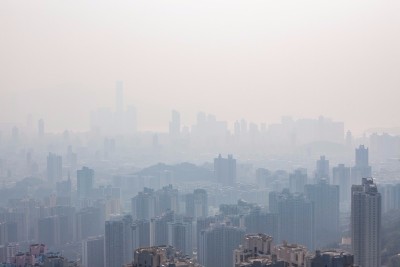While global oil production data for June is still preliminary, it indicates that global oil production is now above Oct. 2016 levels, despite OPEC’s plan to reduce supply. As illustrated in Exhibit 1, despite OPEC’s Big 4 reducing production levels 1.45 MBD, production increases for OPEC’s two wild cards and Non-OPEC’s Big 4, which is […]
New Coal & Gas Price Sensitivity Outlook Projects 2017 Coal Generation to Actualize Lower than Expected
EVA has published its July Coal & Gas Price Sensitivity Outlook. The report provides insight into how Coal-to-Gas (C2G) competition may evolve given pending changes to fuel pricing and the fundamental structure of the electric power markets. EVA’s Scenario Analysis (SCAN) of modeled assumptions provides high-level insight into a broad range of market-driven outcomes. Highlights […]
First Ozone Season Under the CSAPR Update Rule Begins Amid Uncertain Market Conditions
This month marks the official start of the 2017 ozone season. 22 eastern U.S. states will have to comply with much tighter emission budgets than over the last two ozone seasons. Emission budget reductions for CSAPR states, required by the EPA as part of the 2016 CSAPR Update Rule, have created very delicate market conditions […]
Structural changes over the past 12 months set to increase power burn by 0.75 – 1.00 BCFD over next year
The advent of low natural gas prices as a result of the shale revolution led to a major structural shift from coal to gas in the power markets. Based on EVA’s proprietary Power Plant Tracking Database, almost 47 GW of gas-fired capacity has been added till date starting 2012. Nearly 13 GW of new gas […]
New EPA under President Trump: Obama-Era Regulatory Rollbacks are in Full Swing
After last month’s issue of the long-awaited Executive Order (EO) on “Promoting Energy Independence” (see March Newsletter), the Environmental Protection Agency (EPA) headed by Administrator Scott Pruitt is in full force to undo some of the regulations supporting the “War on Coal.” As part of his EO issued last month, President Trump requested that the […]
Quick Trip: Despite increasing pipeline connections, Mexico emerges as the largest importer of U.S. LNG
As of late-April, Sabine Pass has exported more than 100 LNG cargoes to 17 different countries. Regionally, the shipments have been split almost equally between South American, Asian and Middle Eastern markets, fluctuating based on seasonal demand. Yet somewhat unexpectedly, the single largest importer of U.S. LNG is the country that would otherwise seem to […]
‘Tis the Season for Curtailment: Amid low seasonal demand, California tests the limits of renewable energy penetration
After suffering through several years of severe drought, California experienced record rainfall in late-2016 and early-2017, sufficient to fill previously depleted reservoirs. Simultaneously, the state brought on an additional 5.3 GW of solar capacity in 2016, bringing the total to 10.3 GW to go along with 5.7 GW of wind capacity. As a result, renewable […]
OPEC Cuts Production, but Change in Global Supply Muted
At the halfway point in OPEC’s six-month plan to reduce global supplies, the 11 participating OPEC members have reduced production 1.35 million barrels per day (MMBD) from Oct. levels. However, those production cuts have been partially offset by increases elsewhere in the world. This newsletter provides a granular assessment of these offsetting variances and addresses […]
Canadian Gas Imports: A Reversal in Trends
For the seven year period from 2008 to 2014 net Canadian exports to the U.S. were declining (i.e., 3.9 BCFD, or 43%). However, in 2015 and 2016 this trend was reversed. This newsletter examines both the underlying drivers behind this reversal in trends and the intermediate-term outlook for Canadian imports. Regional Assessment: Northeast Declines, While […]
RPS Compliance in PJM Markets: More flexibility than meets the eye
The PJM powerpool includes several states with sizeable Renewable Portfolio Standards (RPS). The standards—in MD, NJ, OH, PA, IL, DE and DC—require an escalating portion of retail sales be met through qualified renewable energy (RE) generation. Load serving entities in the PJM region comply with their relevant RPS obligations via Renewable Energy Credits (RECs), which […]

















